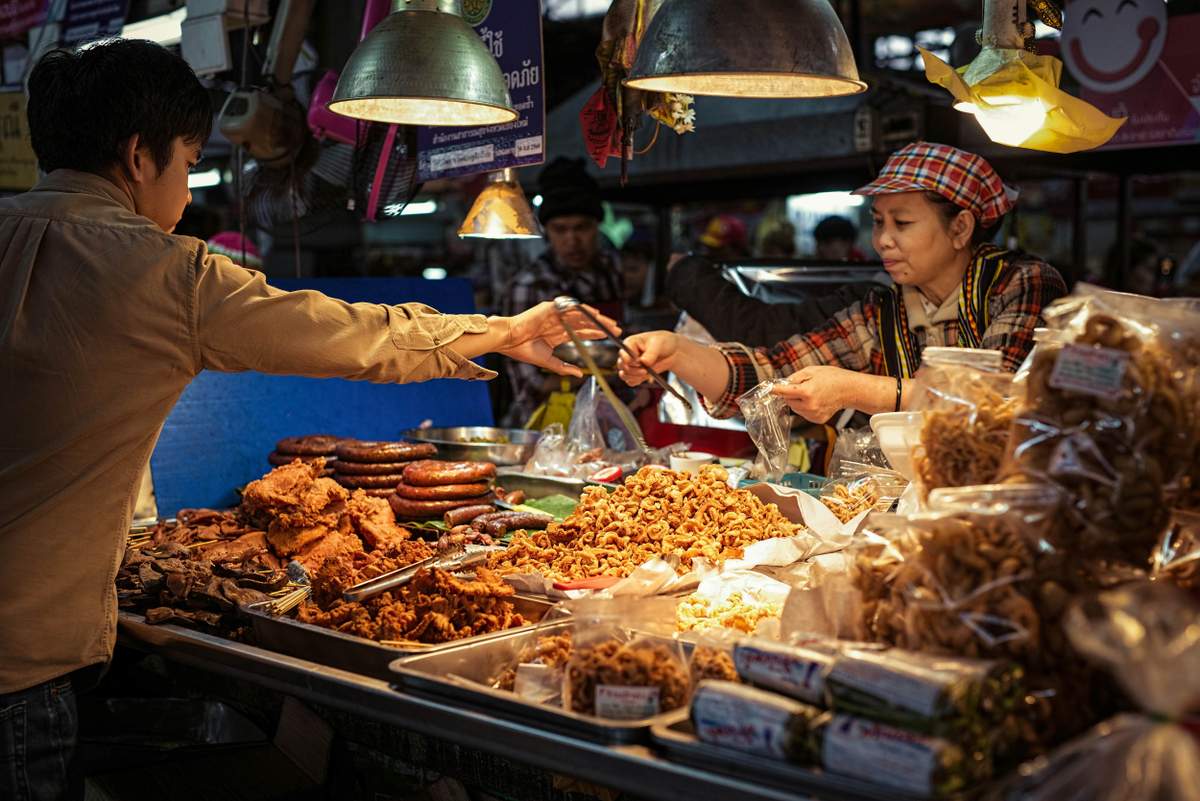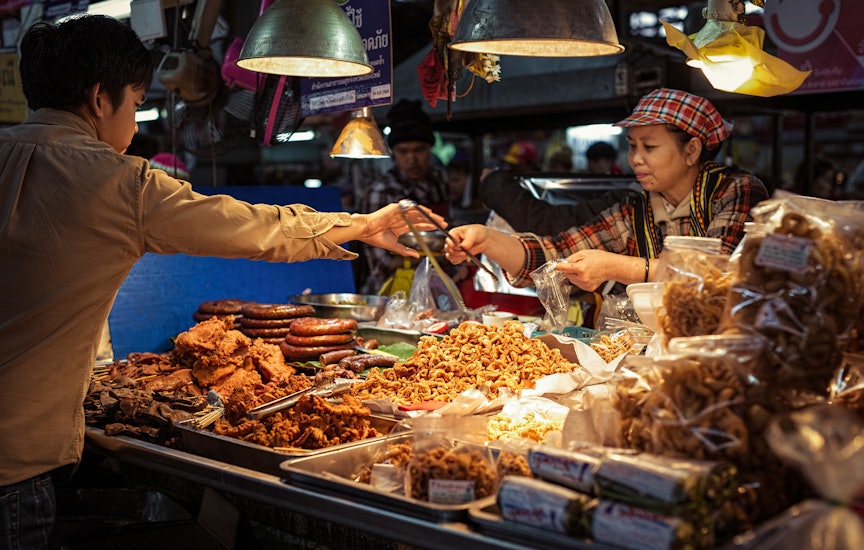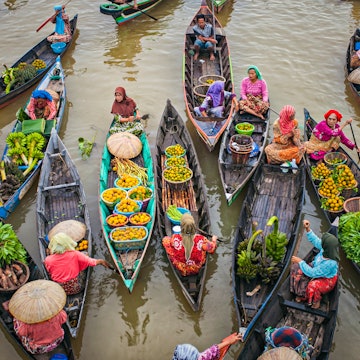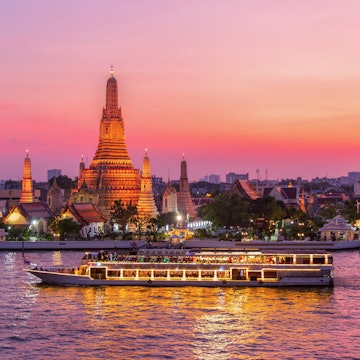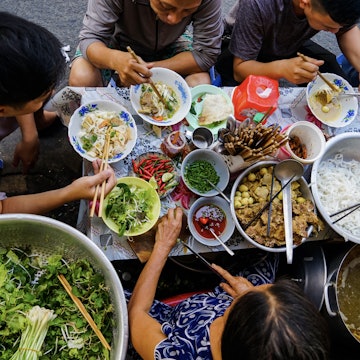
The 7 best day trips from Bangkok, Thailand


Wat Mahathat Temple, Ayuthaya. cowardlion/Shutterstock
Bangkok is an all-you-can-eat buffet for the senses – a captivating sprawl of monasteries and markets, hip bars and historic royal palaces, timeless shrines and space-age malls, threaded along the snaking path of the Chao Phraya River.
But for all Bangkok's golden brilliance – and world-class food and nightlife – the Thai capital can be a little overwhelming for those unused to its crowds, traffic and noise.
During the peak season in Bangkok from November to February, the weather is mild, dry and perfect for exploring, but the crowds can be pretty intense. Worry not – you'll have plenty of things to do near Bangkok, and these easy day trips let you leave the noise behind and connect with a gentler, calmer vision of the Land of Smiles.
From historic towns and ancient ruins to evocative WWII relics and even golden beaches, here’s our pick of the best day trips from Bangkok.
1. Enjoy rural calm in the city at Bang Krachao
Travel time: 30 minutes
How to travel: by boat
Although nominally considered part of Bangkok, Bang Krachao feels like stepping into rural Thailand – the antithesis of the busy metropolis on all sides. Tucked inside a loop of the Chao Phraya River, this peaceful district offers such delights as the Bang Nam Pheung floating weekend market, a scattering of historic temples and an eco-resort where you can sleep in a treehouse.
Bang Krachao covers 16 sq km (6.2 sq mi) of mangrove forests, small homesteads and elevated pathways precariously perched above winding canals. It’s popular with cyclists, who meander past teak-framed houses shaded by clusters of palm trees, but it's worth coming on foot to properly explore what remains of the hamlets absorbed by Bangkok's urban sprawl.
A must-stop is Si Nakhon Kheun Khan, a public park and botanical garden with bike trails, fishponds and a lookout where you can spot many striking Thai bird species, including the pink-necked green pigeon.
How to get to Bang Krachao:
Boats make the 5-minute river crossing to Bang Krachao from Wat Klongtoey Pier in the southeast of the city, about a half-hour taxi ride from the center of Bangkok (the trip takes longer in heavy traffic). Once on the island, bikes can be rented at the pier.
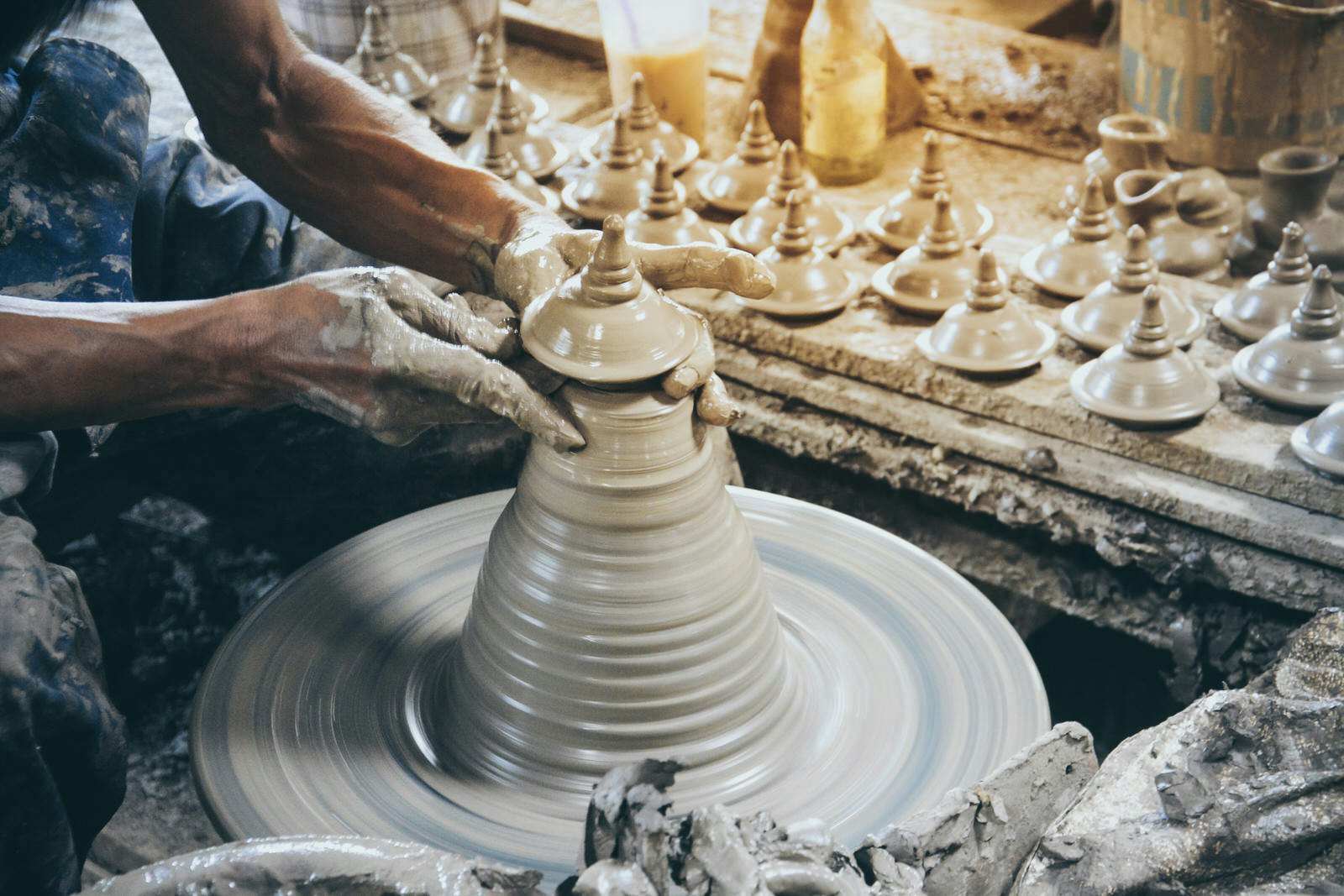
2. Pedal through pottery villages on Ko Kret
Travel time: 1 hour
How to travel: by taxi or bus
A man-made island in the Chao Phraya River, Ko Kret was first settled by Mon people from Burma, who ruled central Thailand between the 6th and 10th centuries. Twelve kilometers (7.5 miles) north of central Bangkok, the island is today a charming backwater, largely untouched by modern development. It's a place to escape the crowds and cars of the Thai capital – only bikes and motorcycles are allowed on its single road.
Ko Kret is also celebrated for its handmade terra-cotta pots, famed for their intricate carved patterns. You can visit workshops and buy ceramics directly from local artisans who continue to use techniques handed down through generations. Renting a bicycle or hopping on a moto-taxi is the most effective way to explore. Don't miss Wat Poramai Yikawat, the grandest temple on the island, with a leaning Burmese-style chedi (stupa), an imposing marble Buddha statue and a museum showcasing local ceramics and religious relics.
On weekends, a busy morning food market full of vendors selling Mon dishes and Thai desserts draws both locals and travelers. Arrive when it opens at 9am for the best selection of dishes to sample.
How to get to Ko Kret:
Ko Kret is located to the north of central Bangkok. The easiest way to come is by taxi or bus 166 from the Victory Monument to Wat Sanam Neua in Pak Kret, where you can board a cross-river ferry. Alternatively, charter a longtail river taxi from Nonthaburi, the northern terminus of the Chao Phraya Express riverboat. The journey from Saphan Taksin (Central Pier) to Nonthaburi Pier takes around 40 minutes.

3. See Nakhon Pathom's historic stupa
Travel time: 1 hour
How to travel: by train or bus
About 64km (40 miles) west of Bangkok, the city of Nakhon Pathom offers a taste of Thai life away from the commercialism of the capital. It's a laid-back spot for one of your day trips from Bangkok, and it's visited mainly by locals. The city center is dotted with markets, including some good night markets serving lip-smacking street food.
The main reason to come is to visit the towering Phra Pathom Chedi, one of Asia's tallest stupas, topping out at 120m (394ft). Originally founded in the 6th century, this revered shrine was repeatedly remodeled over the centuries. A Khmer-style prang (temple tower) was added in the 11th century, but it was ransacked by Burmese invaders and lay in ruins until the 1860s, when the current bell-shaped stupa was constructed.
How to get to Nakhon Pathom:
Trains heading to southern Thailand from Bangkok stop in Nakhon Pathom, and you can also get here on commuter trains from Thonburi station. There are also regular buses from Bangkok's southern bus terminal.
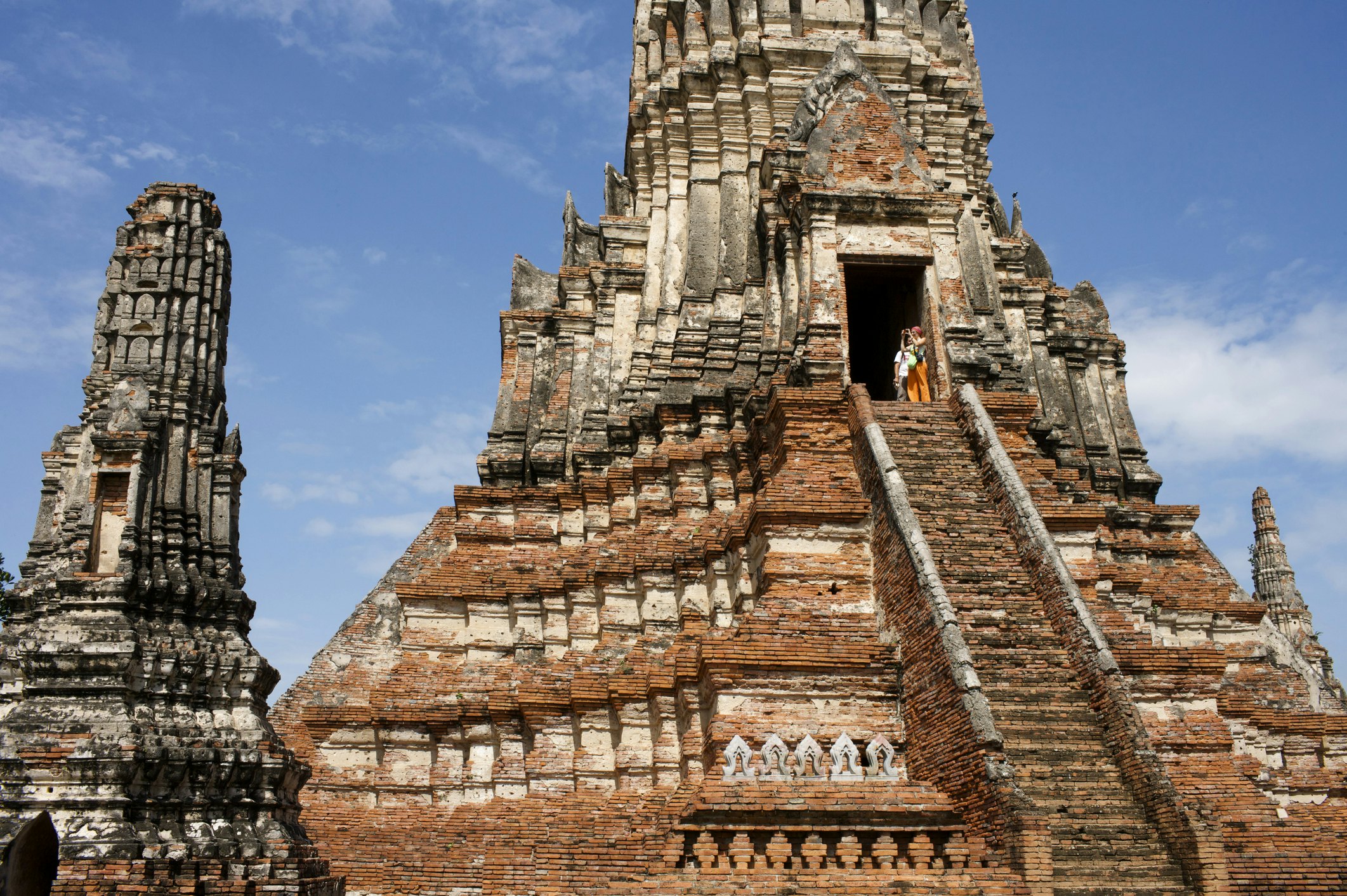
4. Explore atmospheric temple ruins in Ayuthaya
Travel time: 1 hour
How to travel: by car or minivan
Before Bangkok claimed the crown as the Thai capital, Ayuthaya was the official seat of the long-lived kingdom of Siam. The ancient city was founded in around 1350 and its extravagant rulers filled the streets with some 400 temples and palaces, many adorned with resplendent gold leaf. Most were ravaged when Burmese invaders rolled into town in 1767.
Today Ayuthaya's many ancient relics live on as genteel ruins, giving Cambodia’s Angkor Wat a run for its sightseeing money. For some ancient ruins near Bangkok, the Khmer-style spires at Wat Ratchaburana still rise as dramatically as they did in the 15th century, while Wat Mahathat is famed for its sandstone Buddha head tangled in the roots of an ancient Bodhi tree. Chao Sam Phraya National Museum, meanwhile, is the custodian of items once housed in the temple’s crypts, including ancient Thai pottery, if you're seeking cultural day trips.
The temples are dotted around the peaceful Ayutthaya Historical Park, which is best circumnavigated by bike. Pick up rental wheels on arrival outside Ayutthaya train station. Alternatively, jump in a tuk-tuk for a breezy way to explore this fascinating UNESCO World Heritage site.
How to get to Ayuthaya:
Ayuthaya is north of Bangkok, roughly an hour away by car or shared minivan from Bangkok’s Victory Monument. The trip doesn't take much longer by train to Ayutthaya Station, about 4km (2.5 miles) from the ruins.

5. Discover WWII history and more in Kanchanaburi
Travel time: 2–3 hours
How to travel: by minivan
Kanchanaburi has a dark history to thank for its modern-day popularity. The town is the setting for the hauntingly titled Death Railway Bridge, built by Allied prisoners during WWII and immortalized in the (largely fictional) plotline of Pierre Boulle’s novel The Bridge Over the River Kwai and the subsequent Hollywood movie adaptation starring Alec Guinness.
As well as this evocative landmark, the town is dotted with fascinating war museums – including the JEATH War Museum, which displays photographs, paintings and wartime relics (including an unexploded bomb). Dotted around the streets are somber cemeteries that give a human face to the harrowing events that took place here.
But there’s more to Kanchanaburi than military history. If you're looking to take it easy, the surrounding countryside offers a wealth of low-key outdoor activities. Admire the handsome buildings along the town’s Heritage Walking Street, then duck into the intriguing cave temple of Wat Ban Tham, with its entrance resembling a dragon’s mouth. To enjoy this as one of your nature day trips from Bangkok, take a bamboo raft down the river or swim in the stunning waterfall in Erawan National Park, then take an organized trek into the area’s dense jungles.
How to get to Kanchanaburi:
Kanchanaburi is located to the west of Bangkok, 2 hours away by road. Minivans cover the route regularly from Bangkok's Victory Monument. You can also reach Kanchanaburi by train, but this requires a change in Nakhon Pathom; allow 3 hours in total.

6. Explore Bangkok's closest beaches in Pattaya
Travel time: 2–3 hours
How to travel: by bus or minibus
Is the beach resort of Pattaya worth visiting on one of your day trips from Bangkok? That depends on who you ask. For some, this is just a conveniently located Thai beach resort, handy for the capital and packed with attractions for all ages, including two water parks and a zip line course, plus some great hotels and restaurants targeting the tourist crowds.
Others will recoil at the touristy vibe and lingering signs of the sex industry that has fueled Pattaya’s popularity ever since off-duty American GIs first started coming here in the 1960s.
But it isn't hard to avoid this scene, and Pattaya has some decent strips of beach – namely Naklua to the north and Jomtien to the south – for those hankering for a quick dip after the sizzling urban heat in Bangkok. Night owls are well catered for too, with a good selection of nonseedy bars, including live music venue Hot Tuna, and nightclubs aplenty.
How to get to Pattaya:
Pattaya is around 2 hours southeast of Bangkok by road. Several companies run direct buses and minibuses to Pattaya, including 12Go Transport, with departures from the Makkasan Airport Rail Link Station on New Petchaburi Rd in Bangkok.
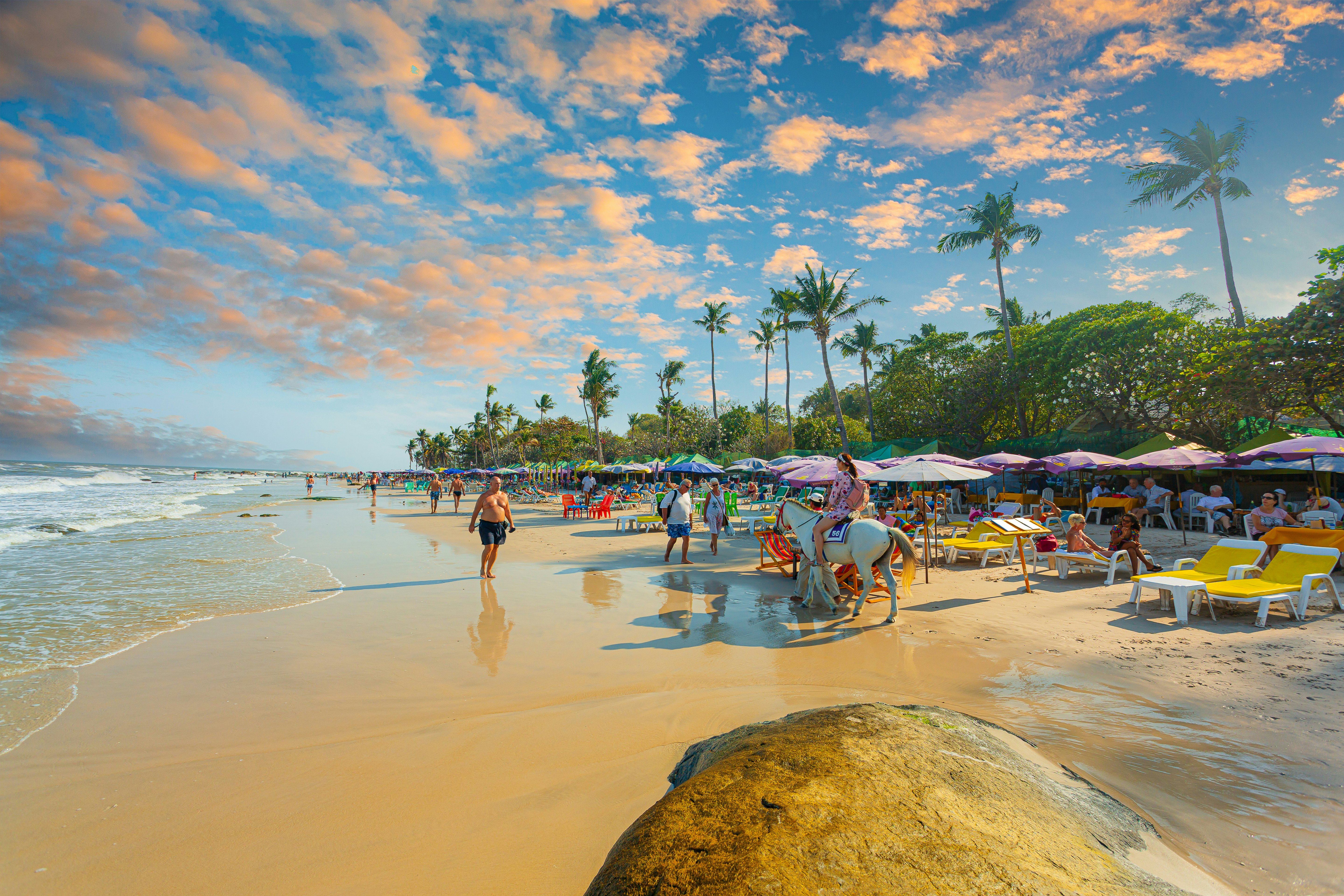
7. Enjoy sun, sand and seafood in Hua Hin
Travel time: 3–4 hours
How to travel: by car or bus
Thailand’s original beach resort, Hua Hin is a refreshing mix of city and sea with lively markets, good golf courses and water parks, and an ambiance that just keeps getting more hip and cosmopolitan. It's more relaxed than many more famous beach hubs, and some visitors never even step foot on the sand.
This former fishing village rose to prominence in the mid-1920s, when it was transformed into a fully fledged resort town for the Bangkok-based nobility. Kings Rama VI and Rama VII built summer palaces here, but today, the resort attracts Bangkok folk from all walks of life.
Given the resort is around 3–4 hours from Bangkok, most day-trippers choose to stay for at least one night, and the city has a good array of guesthouses catering to ordinary folk as well as princes. Likewise, the town's restaurants dish up plenty of low-priced, high-quality seafood.
While the shallow beaches don't quite match those of the islands in Thailand’s Lower Gulf, Hua Hin is Thailand's kiteboarding capital, blessed with strong, gusty winds. Lessons are available from several outfits including Kiteboarding Asia.
How to get to Hua Hin:
Hua Hin is located 221km (137 mi) southwest of Bangkok, and it takes just under 3 hours to get here by car, or 4 hours by bus. Direct trains also connect Bangkok's Krung Thep Aphiwat Central Terminal and Hua Hin in around 4 hours.





